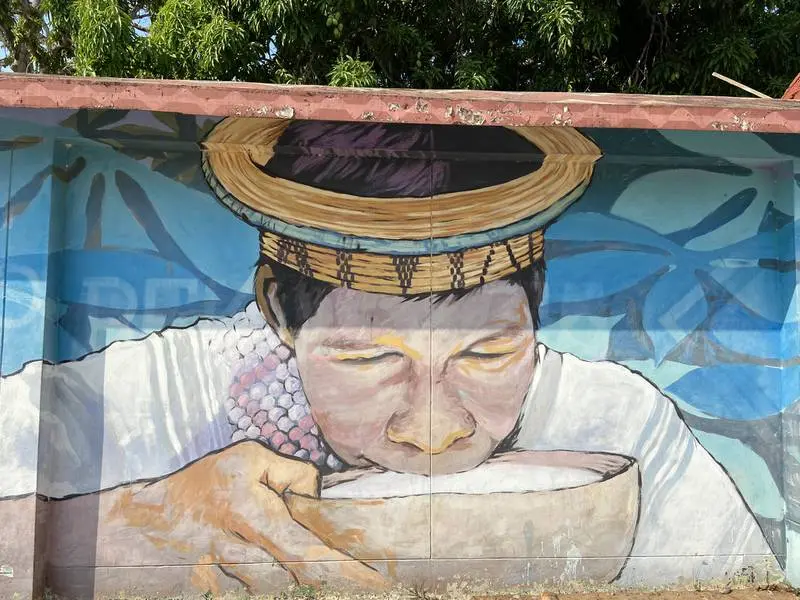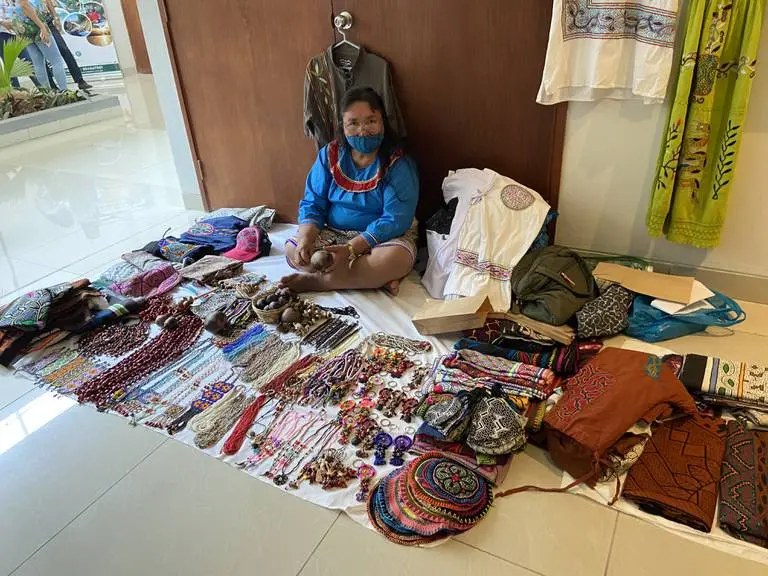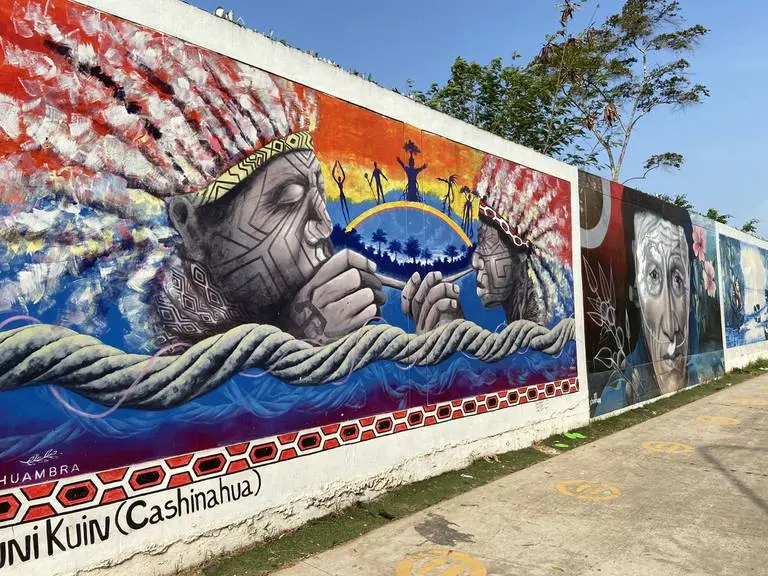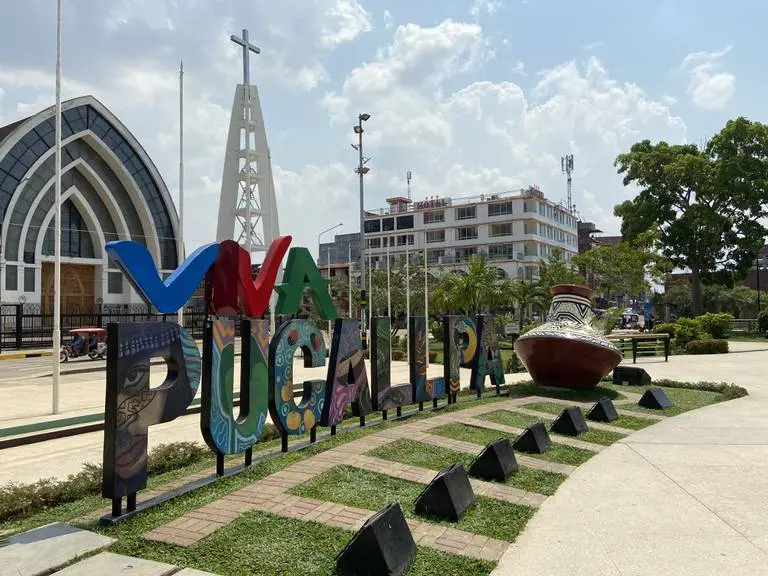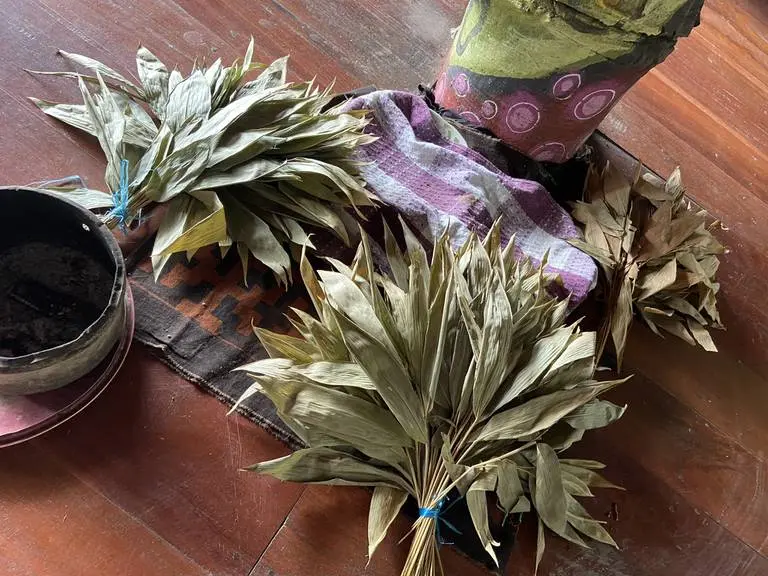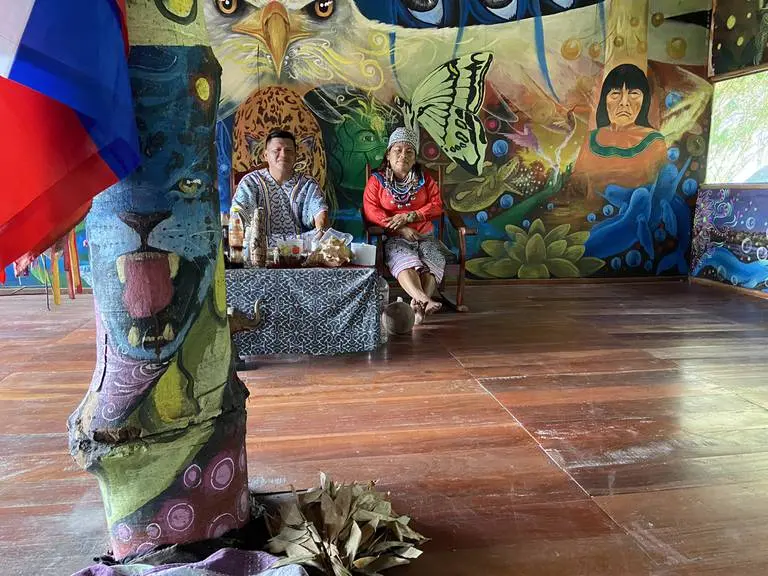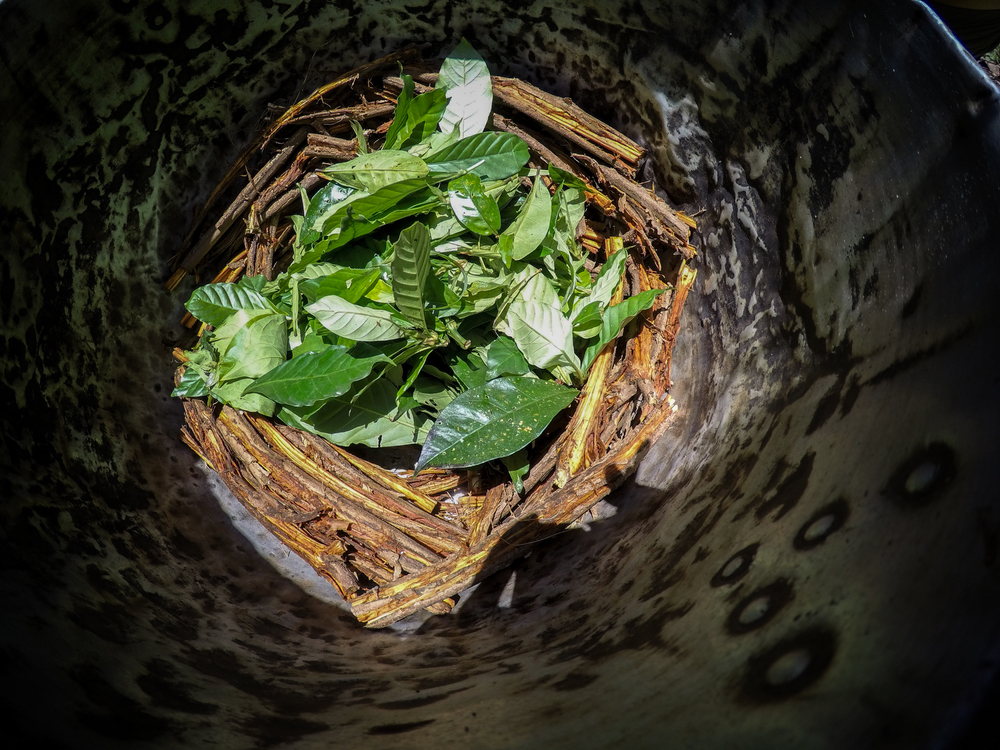This story excerpt was translated from Spanish. To read the original story in full, visit World Metro News. You may also view the original story on the Rainforest Journalism Fund website here. Our website is available in English, Spanish, bahasa Indonesia, French, and Portuguese.
In the Peruvian jungle, traditional indigenous medicine resists prejudice, psychedelic tourism and land invasion.
"I am 250 years old," says Peruvian writer Welmer Cardenas Diaz, in front of a makeshift stall selling books and magazines on a street in downtown Pucallpa, the capital of Peru's Amazon region of Ucayali. Wearing a hat and sunglasses, he was protecting himself as best he could from the scorching 36-degree sun. It was almost noon on a Saturday in September and the heat index was over 40 degrees.
After a brief pause, the writer explained, "It's my cosmic age, not my physical age." The person who told him this was an ancient shaman after a ceremony with the indigenous psychedelic drink, ayahuasca. Diaz is the author of "El Brujo Arimuya," a book of mythical stories about the visionary universe of the ancient healers of the Amazon.
In Pucallpa, the mystical heart of the Peruvian Amazon jungle, the shamanic universe of ayahuasca is not only found in the numerous centers that offer sessions with the psychoactive drink. It is also rooted in the culture of the city, in books, paintings, walls, handicrafts, and in the stories of the people, such as the writer who claims to be 250 years old.
But Amazonian shamanism has to face powerful forces to continue to exist. It has to resist local prejudices, religious fanaticism, psychedelic tourism, economic interests, as well as illegal mining, logging, and the increasingly threatening presence of drug trafficking.
